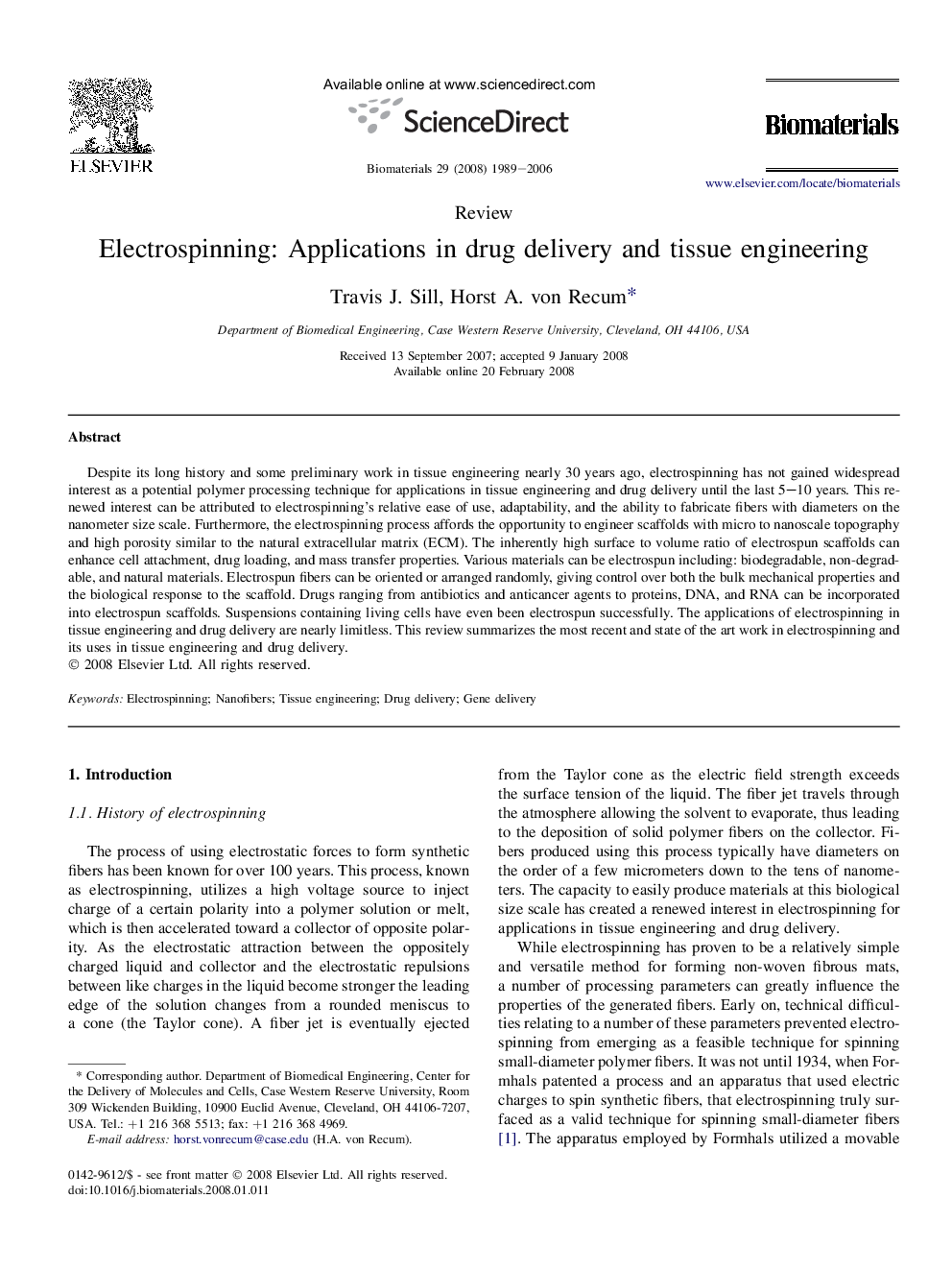| Article ID | Journal | Published Year | Pages | File Type |
|---|---|---|---|---|
| 10484 | Biomaterials | 2006 | 18 Pages |
Despite its long history and some preliminary work in tissue engineering nearly 30 years ago, electrospinning has not gained widespread interest as a potential polymer processing technique for applications in tissue engineering and drug delivery until the last 5–10 years. This renewed interest can be attributed to electrospinning's relative ease of use, adaptability, and the ability to fabricate fibers with diameters on the nanometer size scale. Furthermore, the electrospinning process affords the opportunity to engineer scaffolds with micro to nanoscale topography and high porosity similar to the natural extracellular matrix (ECM). The inherently high surface to volume ratio of electrospun scaffolds can enhance cell attachment, drug loading, and mass transfer properties. Various materials can be electrospun including: biodegradable, non-degradable, and natural materials. Electrospun fibers can be oriented or arranged randomly, giving control over both the bulk mechanical properties and the biological response to the scaffold. Drugs ranging from antibiotics and anticancer agents to proteins, DNA, and RNA can be incorporated into electrospun scaffolds. Suspensions containing living cells have even been electrospun successfully. The applications of electrospinning in tissue engineering and drug delivery are nearly limitless. This review summarizes the most recent and state of the art work in electrospinning and its uses in tissue engineering and drug delivery.
